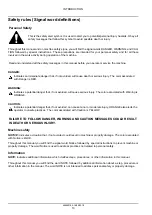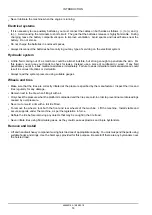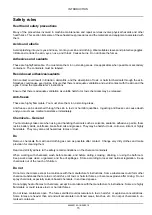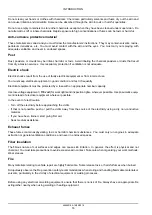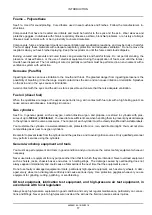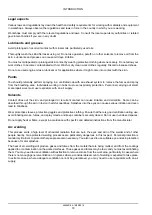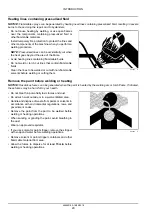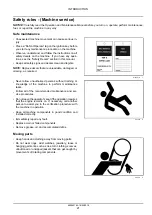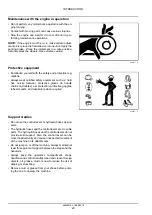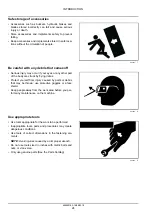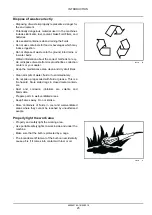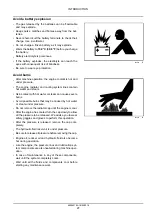
INTRODUCTION
Safety rules
General safety regulations
General Aspects
• Strictly follow repair and maintenance procedures.
• Do not wear rings, wrist watches, jewelry, accessories, unbuttoned items of clothing, unsecured clothing like ties,
torn clothing, scarves, or open jackets or shirts with open zippers that could get caught in moving parts. Use ap-
proved safety clothing, such as anti-slip footwear, sleeves, protective goggles, helmets, etc.
• Wear safety goggles with side shields when cleaning parts using compressed air.
• Worn or damaged cables and chains are not reliable. Do not use these elements in lifting or towing operations.
• Use regulation safety equipment, such as approved eye protection, helmets, clothes, sleeves, and special footwear
whenever you are welding. All individuals near the welding process must use regulation eye protection. Never look
at the welding arc without using suitable eye protection.
• Never perform any repairs on the machine if there is someone in the operator seat, except when the person is a
qualified operator who is helping with the service to be performed.
• Never operate the machine or use accessories from a place other than the operator seat or next to the machine
when operating the fender switches.
• Never perform any operations on the machine with the engine running, except when specifically instructed to do
so. Shut down the engine and release all the pressure from the hydraulic circuits before removing covers, cases,
valves, etc.
• You must conduct all repair and maintenance operations with the utmost care and attention.
• Disconnect the batteries and put warning labels on all of the controls to warn that the machine is being repaired.
Lock the machine and all the equipment that you remove.
• Never check or fill the fuel tank or batteries or use starting fluid when you are smoking or near a naked flame,
because these fluids are flammable.
• The fuel filling gun must remain in contact with the filler neck. Maintain the contact until the fuel stops flowing into
the tank in order to avoid sparks caused by static electricity build-up.
• To transport a faulty machine, use a trailer or a low loader platform trolley, if available.
• To load and unload the machine from the mode of transportation, choose a flat area that offers firm support for the
wheels of the truck or trailer. Securely fasten the machine to the platform of the trailer or truck, in accordance with
the transporter’s requirements.
• Always use hoist mechanisms with an appropriate capacity for lifting or moving heavy components.
• Chains must always be securely fastened. The fastening device must have sufficient capacity to support the in-
tended load. It is prohibited for bystanders to be near the fastening position.
• The work area must always be clean and dry. Clean it immediately if any water or oil is spilled.
• Never use gasoline, diesel, or other flammable liquids for cleaning. Use only non-toxic solvents.
• Do not allow cloths soaked with oil or grease to accumulate because they can cause a fire risk. Always keep these
cloths in a metal container.
Starting
• Never start the engine in enclosed spaces that are not equipped with a suitable exhaust system or gas-extraction
system.
• Never bring your head, body, arms, legs, feet, hands, or fingers close to fans or rotating belts.
Engine
• Always loosen the radiator cap slowly before removing it, in order to dissipate the system pressure. You must top
up the coolant with the engine stopped.
• Do not fill up the fuel tank when the engine is running.
• Never adjust the fuel injection pump when the machine is in motion.
48096018A 18/05/2018
13












